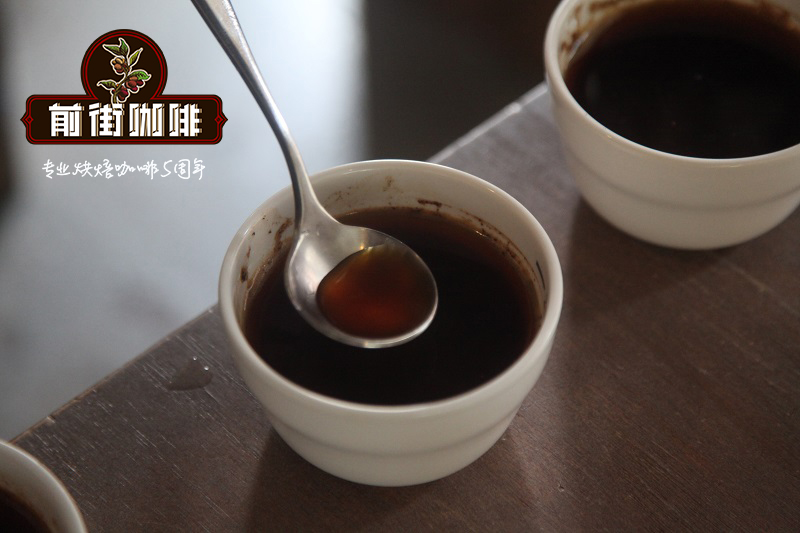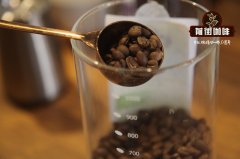Flavor characteristics of Guatemala Antigua Alem Volcano Coffee beans _ Antigua Coffee Brand ALOM

Professional coffee knowledge exchange more coffee bean information please follow the coffee workshop (Wechat official account cafe_style)
Introduction of Guatemala boutique coffee beans-Volcano Aram coffee beans
Volcano Alem coffee beans are produced in Antigua, one of the eight famous producing areas in Guatemala. The canyon in this producing area is surrounded by three volcanoes: Agua, Tierra del Fuego and Alcatel Nango. Tierra del Fuego is one of the three active volcanoes in Guatemala. Every once in a while, the active volcanic movement in Tierra adds a kind of mineral-rich volcanic ash to the soil of Antigua. Therefore, the producing area is rich in fertile volcanic soil, sufficient sunshine, large daytime temperature difference, and volcanic pumice helps to retain soil moisture, which can make up for the lack of precipitation in the area, and there are especially dense shade plants to protect plants from occasional frost.
ALOM Aram is a unique brand in this region. ALOM Aram Coffee is rich in citric acid, perfect bean shape, persistent chocolate and caramel aromas and makes it pleasant to taste.
Altitude: 1500-1700 m
Variety: bourbon, Dukala
Processing method: washing
Drying method: sun exposure
Soil: volcanic pumice
Type of topography and climate: closed valley
Harvest season: January-March
Suitable temperature: 18-22 ℃ / 64-72 °F
Rainfall: 800-1200mm
Relative humidity: 65%
Located in the isthmus of Central America, Guatemala is geologically young, and there are many mountains and plateaus formed by active volcanoes. These high-altitude mountains, because of the cold climate and often covered with fertile volcanic ash soil by volcanic eruptions, are very suitable for the production of high-quality coffee. As the ninth largest coffee producing country in the world, the main coffee producing areas of Guatemala are Antigua, Huehuetenango, Atitlan, Coban, Fraijanes, San Marcos, Acatenango and New Oriete.
Among the eight major producing areas, Antigua is the first to become famous and attract the attention of coffee connoisseurs around the world. The so-called "Antigua" is actually a plateau basin surrounded by three volcanoes up to 3600m above sea level and known locally as the Antigua Valley. In fact, this basin has a long history. Because of its cold climate all the year round, it was favored by the Spaniards who invaded Central America. 460 years ago, in the middle of the 16th century, the Spanish ruling class was built to dominate the entire capital of Central America. At that time, it ruled throughout the present-day Chiapas region of Guatemala, Belize, Honduras, El Salvador, Nicaragua, Costa Rica and Mexico.
Although thousands of buildings in the urban area of Antigua became collapsed and dangerous later because of several earthquakes of magnitude 7 or more in the 18th century, the Spaniards decided to move the capital. However, today's Antigua is still a beautiful ancient city with a history of about 500 years. Top five-star and six-star hotels are opened in the renovated buildings of the ancient city, attracting hundreds of thousands of tourists every year to visit you. Let tourists wantonly immerse themselves in the bleak and magnificent atmosphere of Spanish colonial history 500 years ago.
In the sight of tourists, the Volcan Fuego emits thick smoke and dust day and night, and after night, you can even vaguely see the fire coming out and falling like fireworks from a dark night sky, reminding everyone all the time that the crust under the feet of this area is not at all restless, as if ready for a major apocalyptic event! Although the active volcanic activity is frightening, millions of tons of volcanic ash are released every year in the valley, rich in hundreds of precious and beneficial elements in the earth's crust, making it the best and free high-quality fertilizer for local coffee plantations. at the same time, it nourishes the natural forests and crops of the whole valley.
The coffee farms in the valley are located around the ancient city of Antigua and the basin extends southwest to the foothills of Volcan Agua and Volcan Acatenango volcanoes. This is a very flat area at the bottom of the basin at an altitude of about 1520 Murray 1530 meters, surrounded by hillsides that surround the basin, and coffee trees are planted on the flat part of the basin and on the surrounding slopes about 1600 kilometers above sea level. Shade cultivation is popular in Antigua. Coffee farms often use local forest tall native trees as shade trees to plant ancient excellent variety "Bourbon" and bourbon dwarf mutant "Kaddura" under thick shade.
Highly shaded cultivation of Antigua is rare in the world, perhaps because the valley is sunny at a fixed time of year, and the radiation-cooled night temperature is low enough to frost the leaves above. As a result, the manor must use high-density shade trees to form an insulation layer to prevent coffee from fatal frost. But it also inadvertently prompted the manor to plant a large number of native tree species, allowing local insects, birds, frogs and small mammals. They all have food and shelter, indirectly maintaining the original local ecology, and most of the Antigua coffee estates can easily be certified for rainforest conservation later on. For these estates, the rainforest conservation certification is only well deserved.
Such an environment also allows Antigua coffee trees to enjoy, nourished by volcanic ash and fallen leaves of shade trees. In addition, shade trees provide mild light and stable temperature environment, which also slows the growth and ripening of coffee berries, which has a significant effect on improving the content and overall density of coffee beans. So we can also boldly say: the highly shaded and environmentally friendly agricultural method has strengthened and promoted the taste of Antigua coffee, while the purchase of Antigua coffee has strengthened and strengthened the highly shaded agricultural method of Antigua, which is tantamount to protecting the original ecology of the place! At present, a high degree of circular interdependence has been formed between the two, and it is impossible to cut and separate!
The coffee cultivation industry in Antigua has a long history. In addition to the highly shaded cultivation that prevailed a long time ago, the local coffee estates are mainly large-scale century-old estates, which can cover an area of nearly 100 hectares and produce as much as thousands of bags a year. The production scale of each estate is not small. The manor is usually run by families that have been inherited for hundreds of years, and most of the owners' families live in mansions like European aristocratic castles, and the family members are usually quite rich and own a lot of estate, belonging to the upper class of the local society. coupled with the 100-year history of rich and educated family heritage, each owner can be said to be aristocrats in the coffee world.
In fact, the day-to-day operation of the manor depends on the professional agricultural personnel and workers employed by the landowners, and even depends on the local Mayan aborigines to work as harvesting workers in the manor every year during the harvest season. harvest operations are carried out in the planned areas of each garden. Every harvest season, Mayan harvesters always work in the manor with their families, and adults are busy harvesting, children or playing or helping to play and work in the woods.
These large coffee farms adhere to a century-old tradition and focus on producing high-quality traditional washed coffee. In addition to taking care of shade forests, renewing coffee trees, fertilizing according to scientific analysis and planning, pruning and pruning. During the harvest season, harvesters are strictly required to pick red, ripe and purple ripe berries, and the next key quality control point is set up at the feed source of the washing treatment plant: picking out immature fruits, floating fruits, floating beans, and precisely controlling the fermentation degree of the fermentation tank, fully washing and completely removing pectin, using a clean and smooth concrete exposure site, and turning frequently and fully during exposure. Even before export, we have to use specific gravity selection (Density Sorting) and color selection (Color Sorting) to select and refine coffee beans, so it is difficult to say all the effort and cost involved.
END
Important Notice :
前街咖啡 FrontStreet Coffee has moved to new addredd:
FrontStreet Coffee Address: 315,Donghua East Road,GuangZhou
Tel:020 38364473
- Prev

Guatemala San Sebastian coffee cup test report _ San Sebastian Manor Coffee how
Professional coffee knowledge exchange more coffee bean information Please follow the coffee workshop (Wechat official account cafe_style) among the many items of coffee in the front street, nothing is worth mentioning than Guatemalan coffee beans, its uniqueness in the market is irreplaceable, we have been looking for very high quality selected beans in major producing countries, and Guatemalan coffee beans are extremely visible in the front street.
- Next

Do Guatemalan jasmine treat coffee beans good? characteristics of coffee flavor in Pacaya volcano producing area
Professional coffee knowledge exchange more coffee bean information please follow the coffee workshop (Wechat official account cafe_style) Guatemala jasmine from the San Vicente Pacaya volcano region, from the name may have a vague impression of the temperament of this Guatemalan coffee bean, jasmine has nutty aroma, entrance with caramel and tropical fruit flavor. Jasmine has a balanced taste, someone
Related
- Detailed explanation of Jadeite planting Land in Panamanian Jadeite Manor introduction to the grading system of Jadeite competitive bidding, Red bid, Green bid and Rose Summer
- Story of Coffee planting in Brenka region of Costa Rica Stonehenge Manor anaerobic heavy honey treatment of flavor mouth
- What's on the barrel of Blue Mountain Coffee beans?
- Can American coffee also pull flowers? How to use hot American style to pull out a good-looking pattern?
- Can you make a cold extract with coffee beans? What is the right proportion for cold-extracted coffee formula?
- Indonesian PWN Gold Mandrine Coffee Origin Features Flavor How to Chong? Mandolin coffee is American.
- A brief introduction to the flavor characteristics of Brazilian yellow bourbon coffee beans
- What is the effect of different water quality on the flavor of cold-extracted coffee? What kind of water is best for brewing coffee?
- Why do you think of Rose Summer whenever you mention Panamanian coffee?
- Introduction to the characteristics of authentic blue mountain coffee bean producing areas? What is the CIB Coffee Authority in Jamaica?

